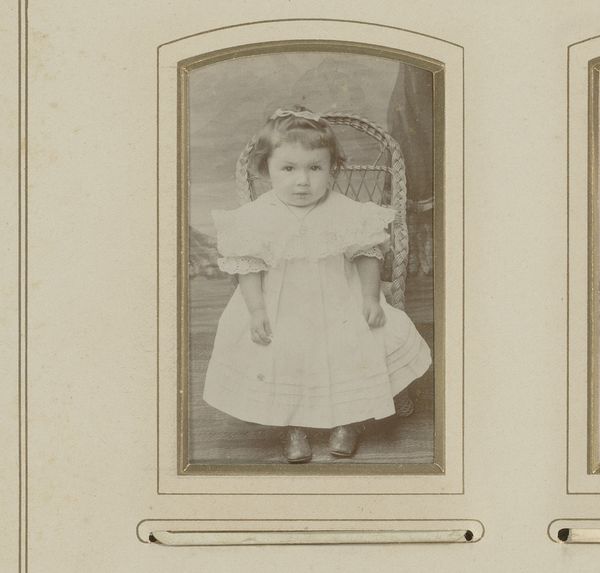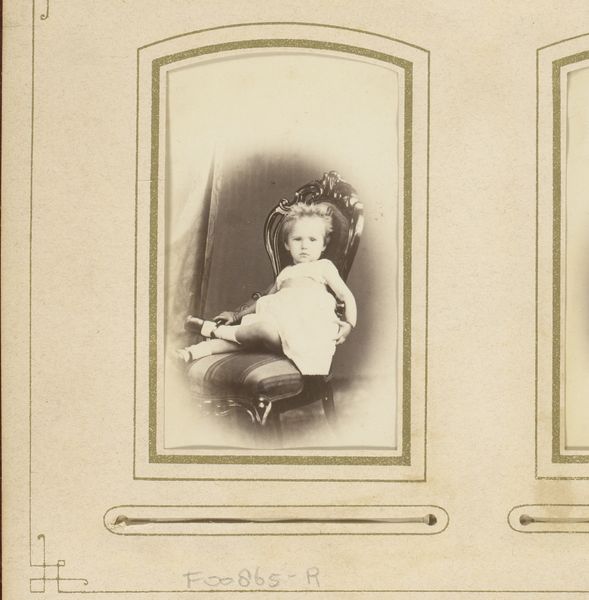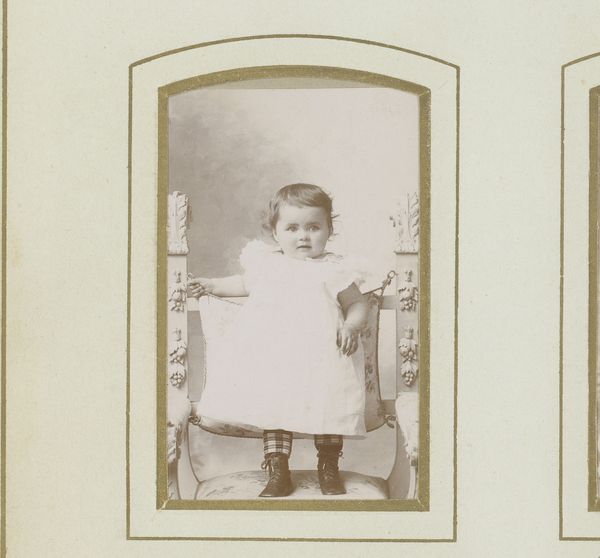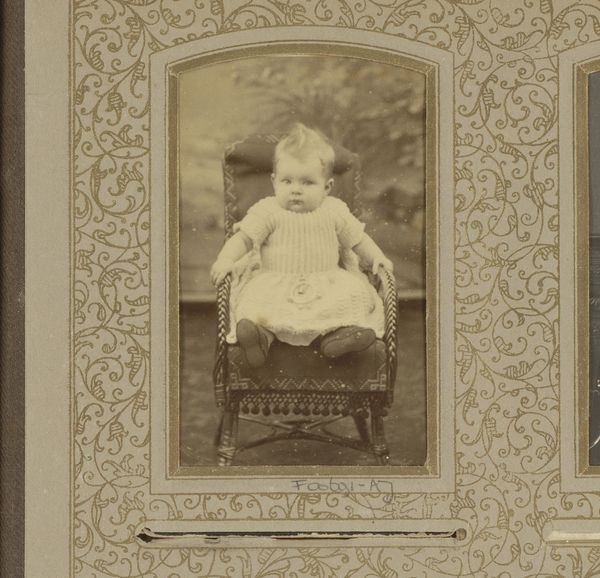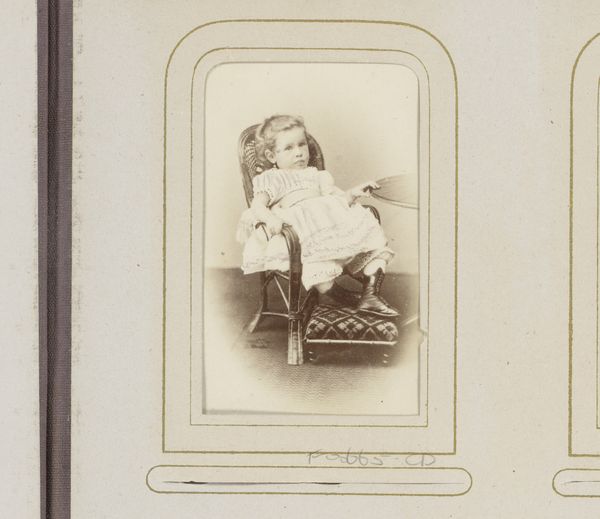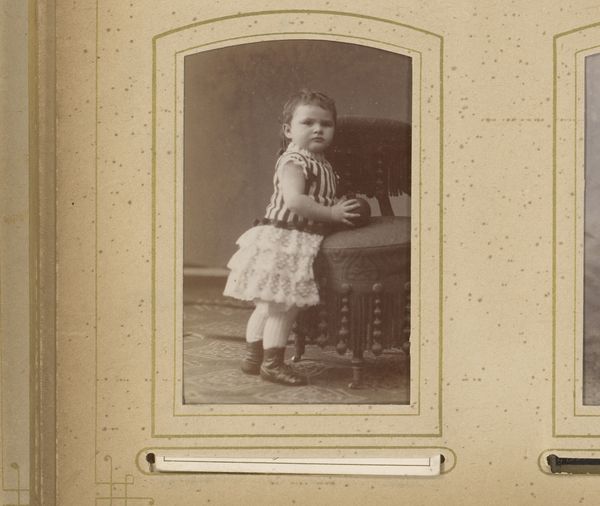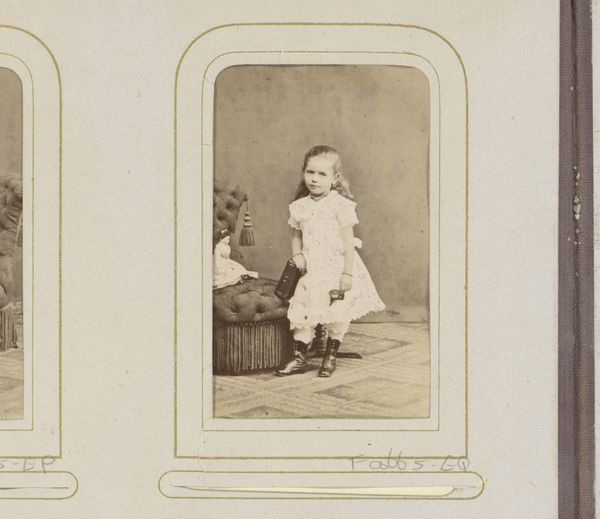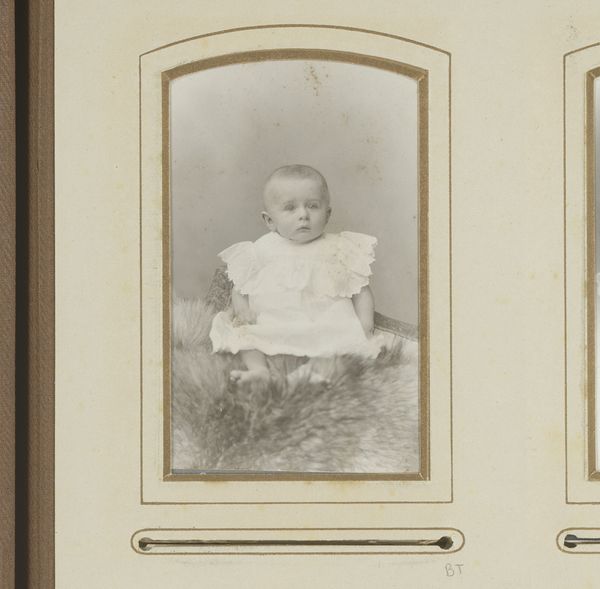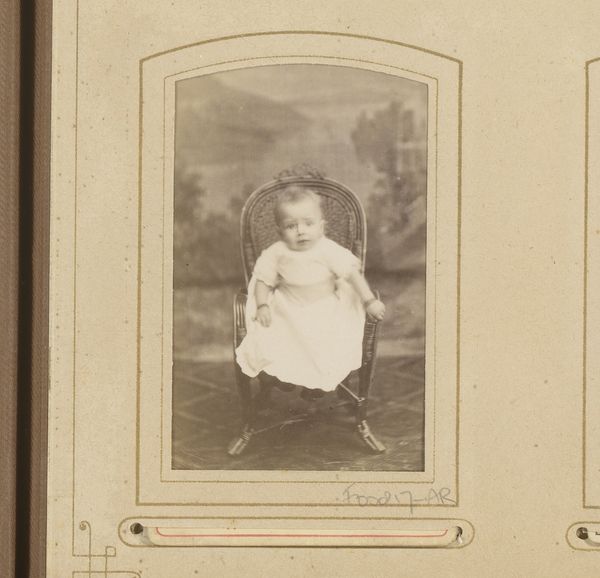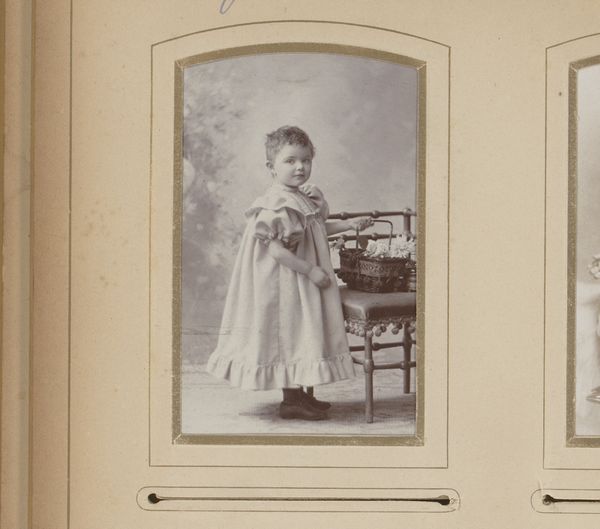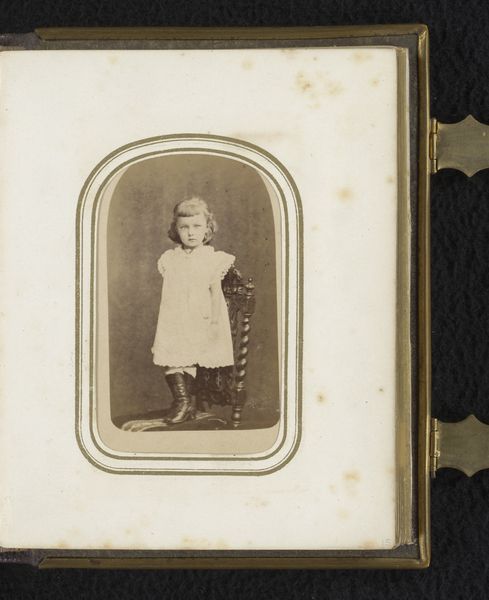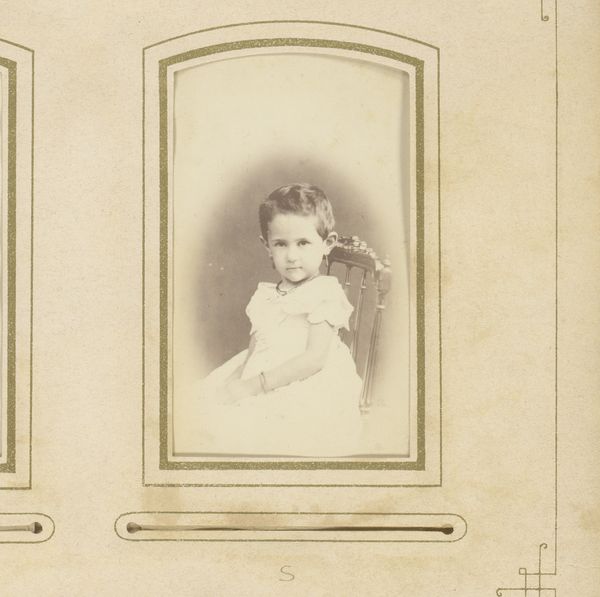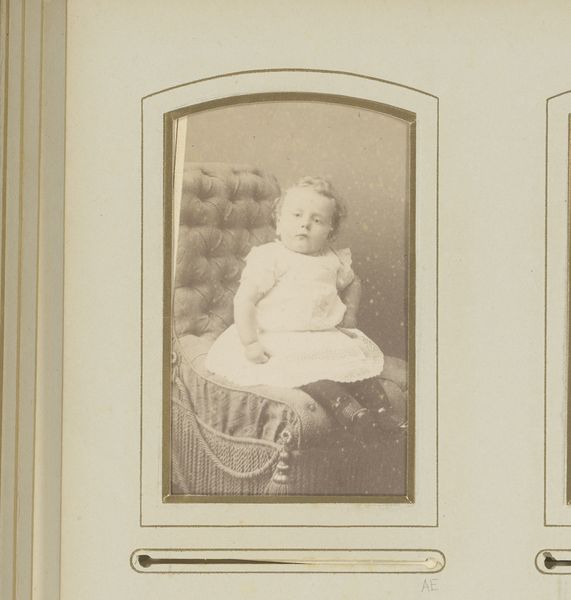
photography, gelatin-silver-print
#
portrait
#
photography
#
historical photography
#
gelatin-silver-print
#
genre-painting
Dimensions: height 85 mm, width 50 mm
Copyright: Rijks Museum: Open Domain
Curator: This is a fascinating gelatin-silver print entitled "Portret van een peuter, zittend op een stoel," created sometime between 1870 and 1880 by Woodbury & Page. It’s currently housed here at the Rijksmuseum. Editor: Immediately, I’m struck by the somber mood, and the almost tangible weight of the moment. That child looks decidedly unimpressed with having their portrait taken. The chair, though decorative, seems oversized, further emphasizing her smallness. Curator: Indeed, the formal nature of portrait photography at that time would have involved specific sitting protocols and clothing expectations. Think about the technological limitations too: long exposure times, dictated stillness, demanding that the child remain relatively motionless for the photographic plate to record a sharp image. It's about capturing an ideal. Editor: And how that 'ideal' becomes a societal expectation, replicated through countless similar images. I find myself considering how photography democratized portraiture while simultaneously reinforcing class structures. Not just anyone could afford a studio sitting, and the careful posing was a direct contrast with quickly made, popular carte-de-visite at this time. Curator: Exactly! The very materiality of the print—the specific gelatin-silver process used—becomes relevant. We have to consider the cost and the labor involved. Photographic studios in this period, such as Woodbury & Page, ran workshops utilizing semi-skilled local labour. How might class have influenced the creation and even the audience for the final print? Was it solely meant for the privileged class of the period? Editor: That's key, looking at the process as a kind of cultural and industrial production, rather than simply an aesthetic endeavor. It makes you question the presumed objectivity of the photographic image, as the result reveals so much about the society that made it. And about what these portraits said about that society and who mattered within its social structure. Curator: Seeing it through your lens, I agree; the history and societal context provide crucial frameworks for understanding this piece. It highlights photography's role in solidifying social standing in the 19th century. Editor: And you've given me so much to think about in terms of photographic process, class consciousness and the production of portraits at that time!
Comments
No comments
Be the first to comment and join the conversation on the ultimate creative platform.
